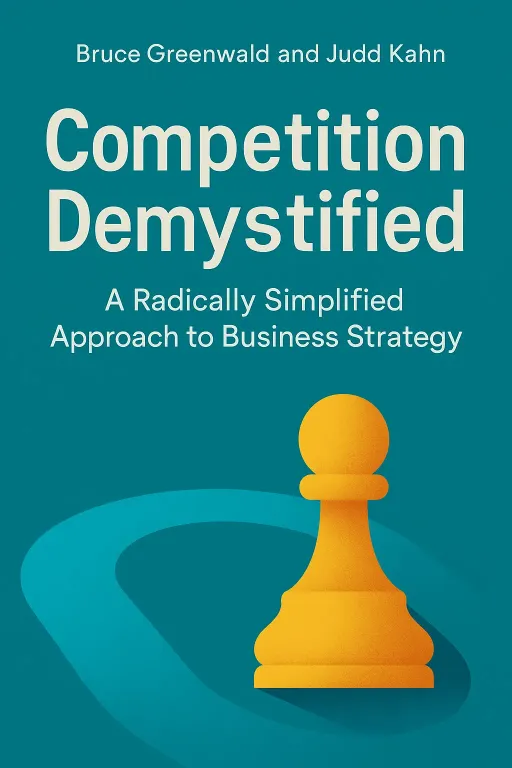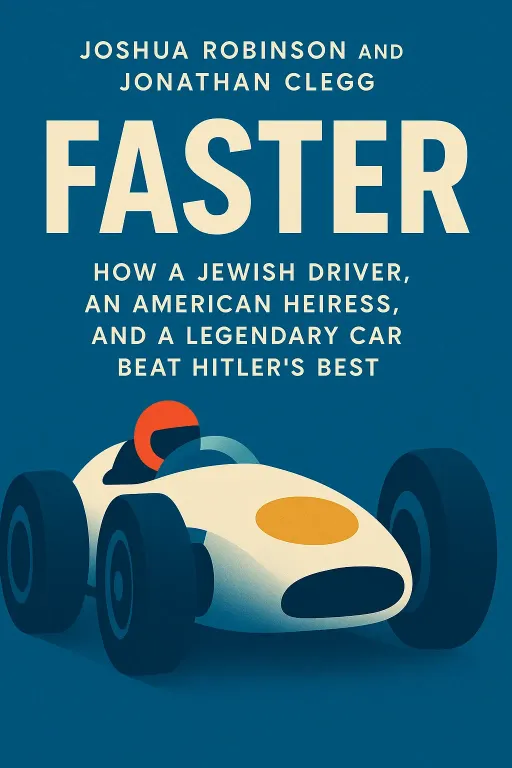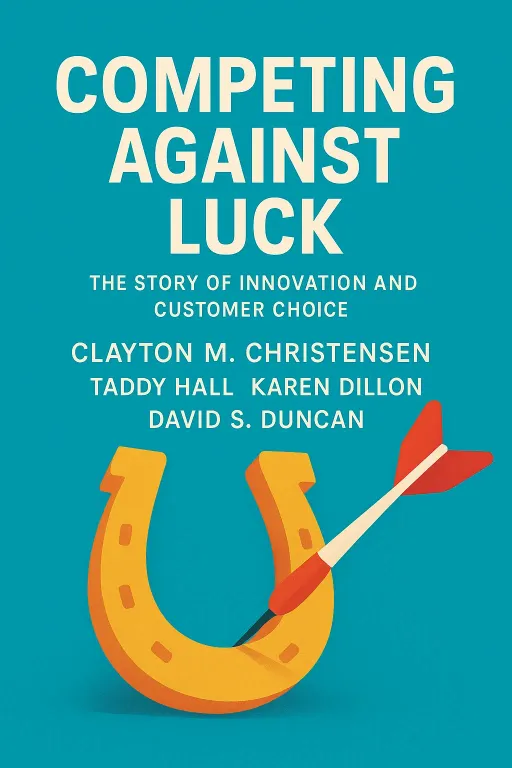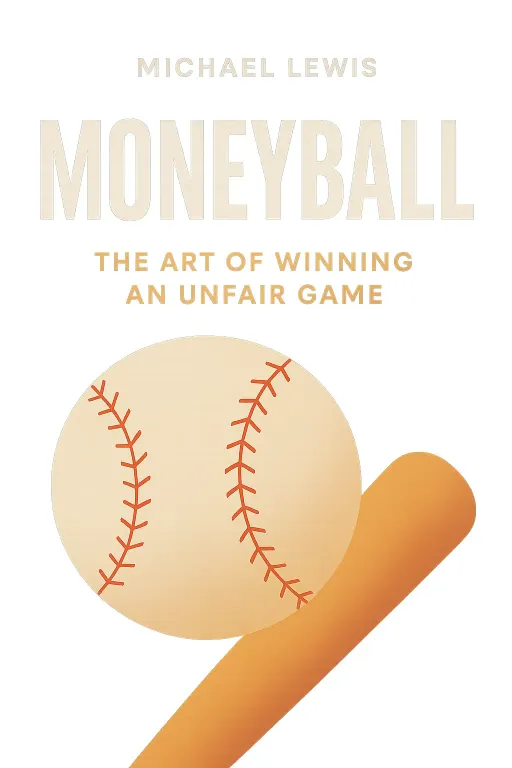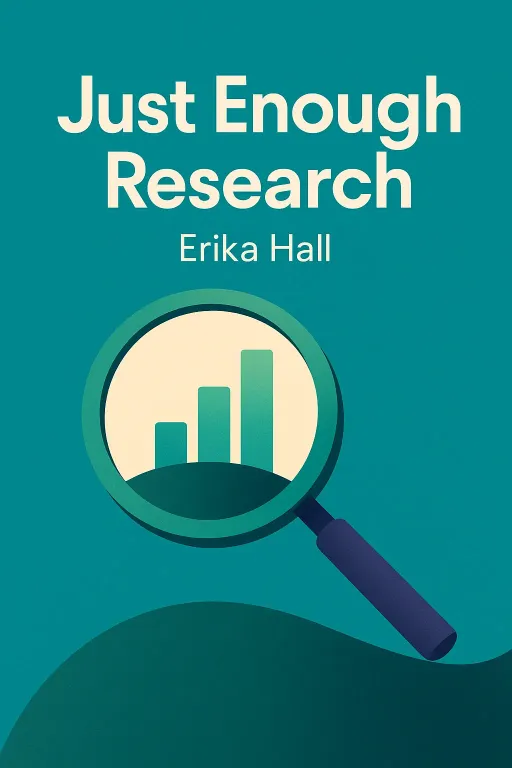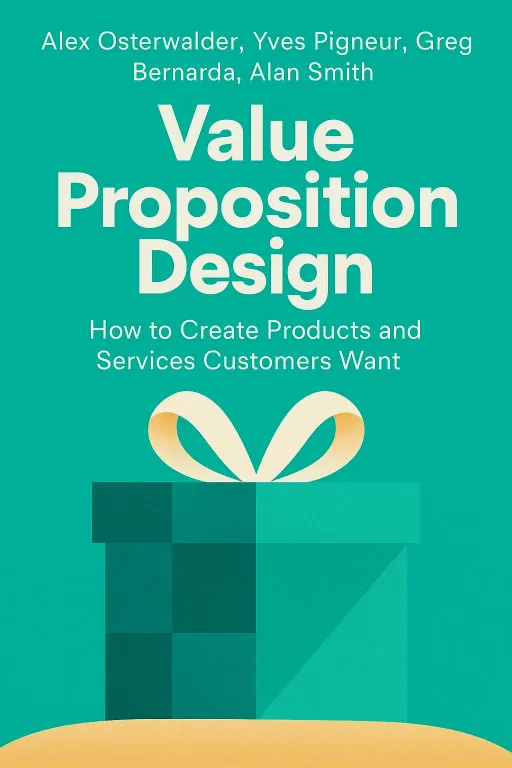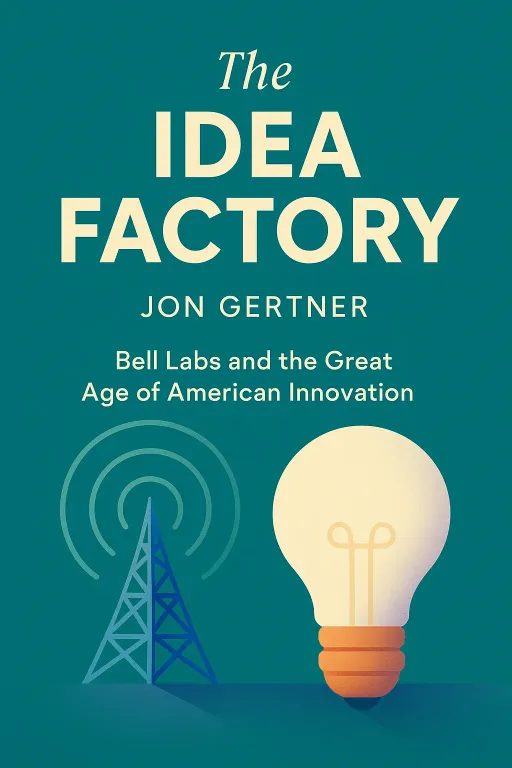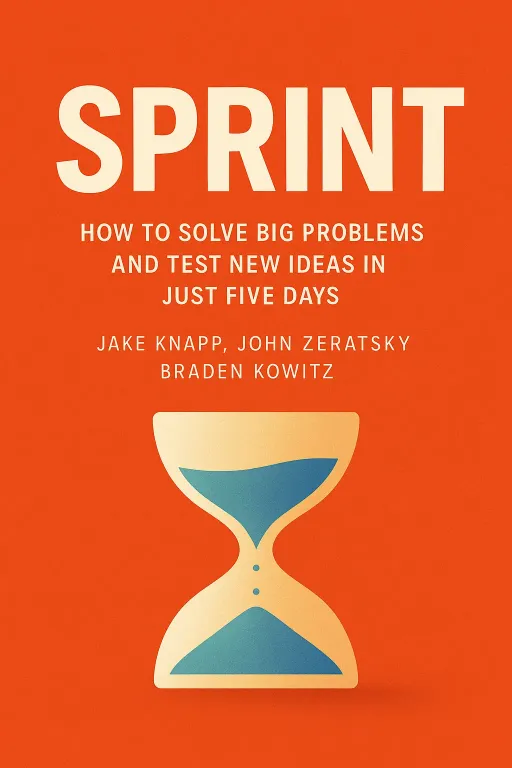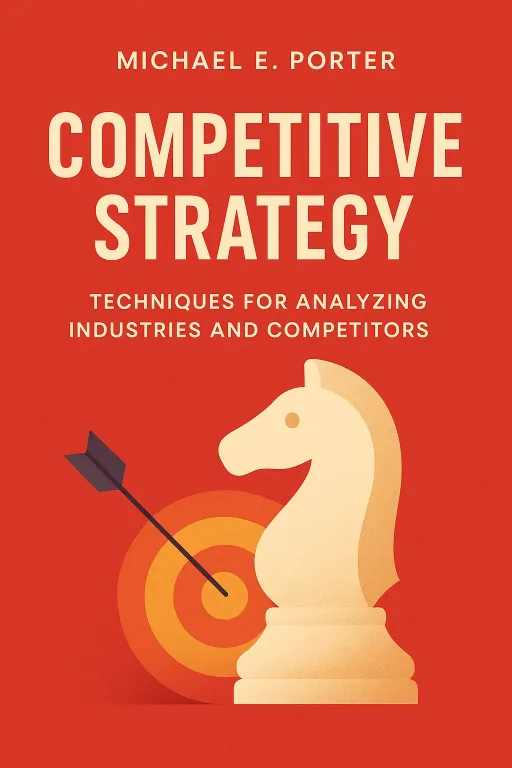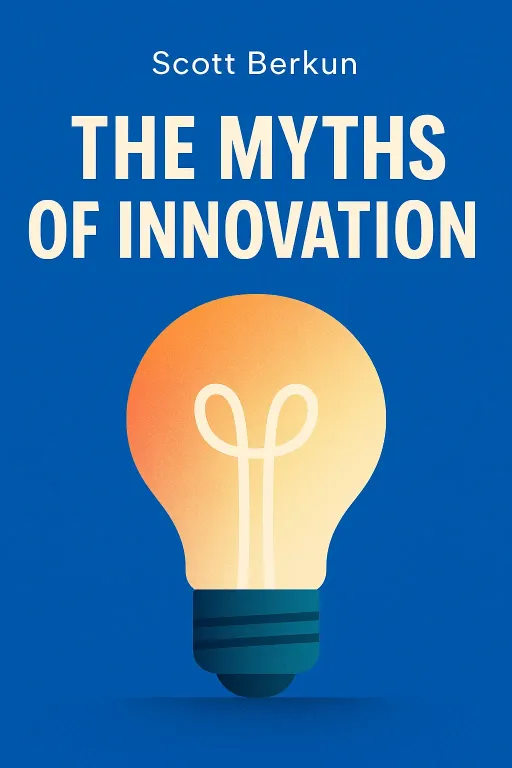
The Myths of Innovation
9 minIntroduction
Narrator: Imagine being on a guided tour of Google's main campus. You're surrounded by beanbag chairs, Ping-Pong tables, and brilliant programmers—an environment engineered for creativity. A fellow tourist, an executive, leans over and whispers, "So, when do they actually come up with the ideas?" The question hangs in the air, revealing a deep-seated belief that innovation is a specific, observable event. We imagine a secret room, a flash of lightning, or a sudden "Eureka!" moment. We picture Isaac Newton getting hit by an apple and instantly understanding gravity. But what if these stories, the very foundation of how we think about new ideas, are completely wrong?
In his book The Myths of Innovation, author Scott Berkun systematically dismantles the romanticized and misleading narratives that surround creativity. He argues that our belief in these myths actively prevents us from understanding and fostering true innovation. The book reveals that the real story of innovation is not one of magic, but of hard work, missteps, and the messy, unpredictable reality of bringing something new into the world.
The Epiphany is a Lie; Innovation is a Grind
Key Insight 1
Narrator: The most pervasive myth is that of the epiphany—the sudden, world-changing flash of insight. The story of Isaac Newton and the apple is a classic example. It suggests gravity was "discovered" in a single, lucky moment. Berkun reveals this is a gross oversimplification that ignores the twenty years of grueling mathematical work Newton performed to actually explain gravity. The apple, if it existed at all, was just a tiny spark in a long, slow-burning fire of effort.
Similarly, the tale of Archimedes shouting "Eureka!" in his bathtub overlooks the immense pressure and numerous failed attempts he endured beforehand. The bath was likely a moment of mental relaxation that allowed his prepared mind to finally connect the dots. Berkun highlights a more honest account from Gordon Gould, the inventor of the laser. Gould described how the full concept for the laser "suddenly popped into his head" one night. But, he crucially added, "that flash of insight required the 20 years of work I had done in physics and optics to put all of the bricks of that invention in there." Innovation, Berkun argues, isn't the final brick; it's the entire structure, built piece by painstaking piece.
Ideas Don't Arrive Fully Formed, They Evolve Unpredictably
Key Insight 2
Narrator: Another myth is that there is a clear, linear method for innovation. The reality is that the path is often chaotic and accidental. Berkun points to the creation of Flickr as a prime example. In 2002, a small team was building an online game called Game Neverending. As part of the game, they created a simple tool for players to share photos. They soon realized the photo-sharing tool was far more interesting and promising than the game itself. With funding running out, they made the difficult decision to abandon their original project and focus on the side feature, which became the wildly successful platform Flickr.
This pattern of accidental discovery is common. 3M's iconic Post-it Notes were born from a failed experiment to create a super-strong adhesive; the result was a weak, repositionable glue that was initially seen as useless. It took years of internal persistence for its true value to be recognized. These stories demonstrate that innovation isn't about executing a perfect plan. It’s about being observant, adaptable, and willing to pivot when an unexpected opportunity presents itself.
The Greatest Barrier to Innovation Isn't a Lack of Ideas, but Human Resistance
Key Insight 3
Narrator: Contrary to the belief that people love new ideas, Berkun asserts that new ideas are often met with fear, skepticism, and outright hostility. Innovations are rarely rejected on their logical merits; they are rejected because of how they make people feel. They threaten the status quo, challenge authority, and create uncertainty.
The book uses the historical example of Western Union to illustrate the "innovator's dilemma." In the late 19th century, Western Union was the undisputed king of communication with its vast telegraph network. When a young Alexander Graham Bell presented them with his invention, the telephone, they dismissed it as a toy. They were so invested in their current success that they were psychologically and economically blinded to the technology that would eventually make them obsolete. This wasn't a failure of intelligence, but a failure of imagination, driven by a desire to protect what they had already built. From Galileo facing the wrath of the Church to modern-day entrepreneurs being thrown out of offices, the story is the same: the primary challenge is not inventing the new idea, but overcoming the human resistance to it.
The Best Idea Doesn't Win; The Best *Integrated* Idea Wins
Key Insight 4
Narrator: We want to believe that the best, most brilliant idea will naturally triumph. Berkun argues this is a dangerous fantasy. Success often depends on secondary factors like timing, marketing, luck, and, most importantly, execution. A brilliant concept can be undone by a single, overlooked detail.
The book provides a chilling case study: the 1999 NASA Mars Climate Orbiter. This $300 million piece of advanced technology was designed for a groundbreaking mission. As it prepared to enter Mars's orbit, it fired its thrusters, flew behind the planet, and was never heard from again. The investigation revealed a catastrophic but simple error. One engineering team had used metric units, while another used English units. The software failed to convert between the two, sending the orbiter on a fatal trajectory into the Martian atmosphere, where it was destroyed. The concept was brilliant, the technology was cutting-edge, but the innovation failed because of a breakdown in integration. The "best idea" is worthless if it isn't compatible with the system it operates in.
Innovation Begins Not with a Solution, but with a Well-Framed Problem
Key Insight 5
Narrator: The final myth Berkun dismantles is the focus on finding "good ideas." He argues that the true starting point of innovation is finding a good problem. How a problem is defined dictates the entire direction of the solution. Innovators who frame problems in new and interesting ways have a massive advantage.
Scott Cook, the founder of Intuit, provides a powerful example. When developing his financial software, Quicken, he didn't see other software companies as his main competition. He realized that for most people, the primary tool for managing finances was a simple pencil and paper. He famously said, "The greatest competitor… was the pencil." This re-framing of the problem—from "how do we build better accounting software?" to "how do we create something better than a pencil?"—forced his team to focus on simplicity, ease of use, and a design that could win over the average person, not just accountants. By defining the problem more creatively, he unlocked a revolutionary solution.
Conclusion
Narrator: The single most important takeaway from The Myths of Innovation is that innovation is not a mystical act reserved for geniuses, but a human-level endeavor accessible to anyone willing to do the work. It demystifies the process, replacing the romantic notion of the "Eureka!" moment with the more realistic, and ultimately more empowering, truth of persistence, observation, and navigating complex social dynamics.
The book leaves us with a profound challenge: stop waiting for a magical muse to deliver a perfect idea. Instead, look at the world around you, find a problem that matters, and begin the difficult, frustrating, and deeply rewarding work of building the solution, one brick at a time.
